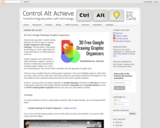
Students will select four characters from familiar books and determine if they have healthy or unhealthy characteristics.
- Subject:
- Social Studies
- Material Type:
- Lesson
- Lesson Plan
- Author:
- Utah Lesson Plans
- Date Added:
- 01/10/2023

Students will select four characters from familiar books and determine if they have healthy or unhealthy characteristics.

Students will sort breakfast food items into sources: store, factory, natural world, and farm.

After reading Joan Sweeney's book "Me On the Map", students will create a map of their bedroom and of their house.

Playing the World Game will make students more familiar with continents, oceans, countries and states.

Students will learn that animals have parts that are called features, and those features have functions that allow them to survive in their habitat. Students will conduct research on an animal of their choice and write an informative paragraph about that animals features.

Share some great Google Drawing practices with your students through this amazing post from Control Alt Achieve.

Google folder with resources for teaching Weather and Climate Patterns, including Googles Slides and accompanying studnent journal files. Contains 4 episodes.

Thanksgiving Point lesson plan about observing weather patterns

Thanksgiving Point lesson plan about climate patterns

Thanksgiving Point lesson plan about natural disasters

Thanksgiving Point lesson plan about animal life cycles

Bring the vocabulary of film to life through the processes of filmmaking. Students learn terminology and techniques simultaneously as they plan, film, and edit a short video.

Thanksgiving Point lesson plan about human genetic traits

Develop and use models to describe changes that organisms go through during their life cycles. Emphasize that organisms have unique and diverse life cycles but follow a pattern of birth, growth, reproduction, and death. Examples of changes in life cycles could include how some plants and animals look different at different stages of life or how other plants
and animals only appear to change size in their life.

Thanksgiving Point lesson plan about traits and behaviors

Construct an explanation showing how variations in traits and behaviors can affect the ability of an individual to survive and reproduce. Examples of traits could include large thorns protecting a plant from being eaten or strong-smelling flowers to attract certain pollinators. Examples of behaviors could include animals living in groups for protection or migrating to find more food.

Thanksgiving Point lesson plan about animal environments

Google folder with Googles Slides and accompanying studnent journal files. Contains 5 episodes.

Plan and carry out investigations that provide evidence of the effects of balanced and unbalanced forces on the motion of an object. Emphasize investigations where only one variable is tested at a time. Examples could include an unbalanced force on one side of a ball causing it to move and balanced forces pushing on a box from both sides producing no movement.

Analyze and interpret data from observations and measurements of an object’s motion to identify patterns in its motion that can be used to predict future motion. Examples of motion with a predictable pattern could include a child swinging on a swing or a ball rolling down a ramp.